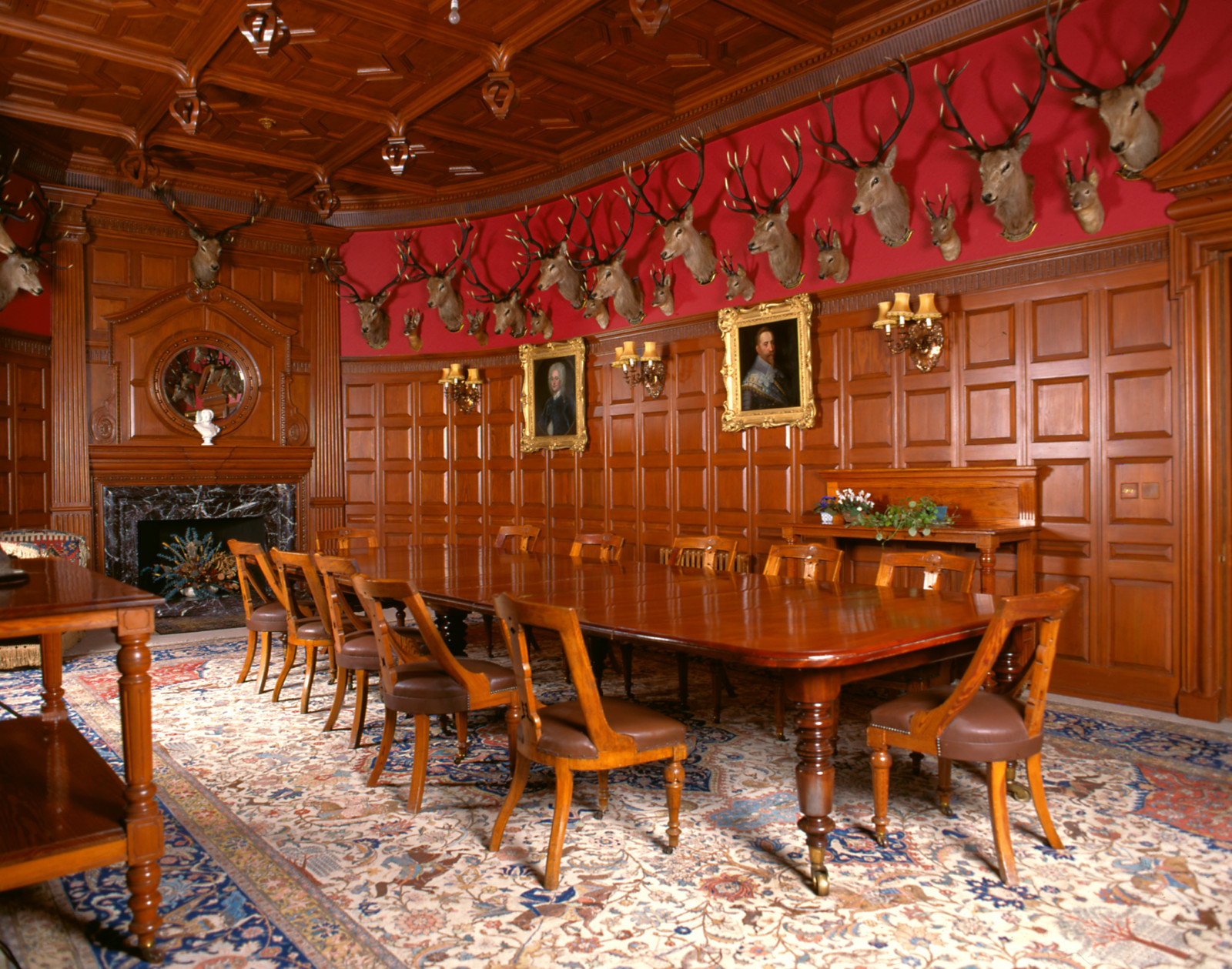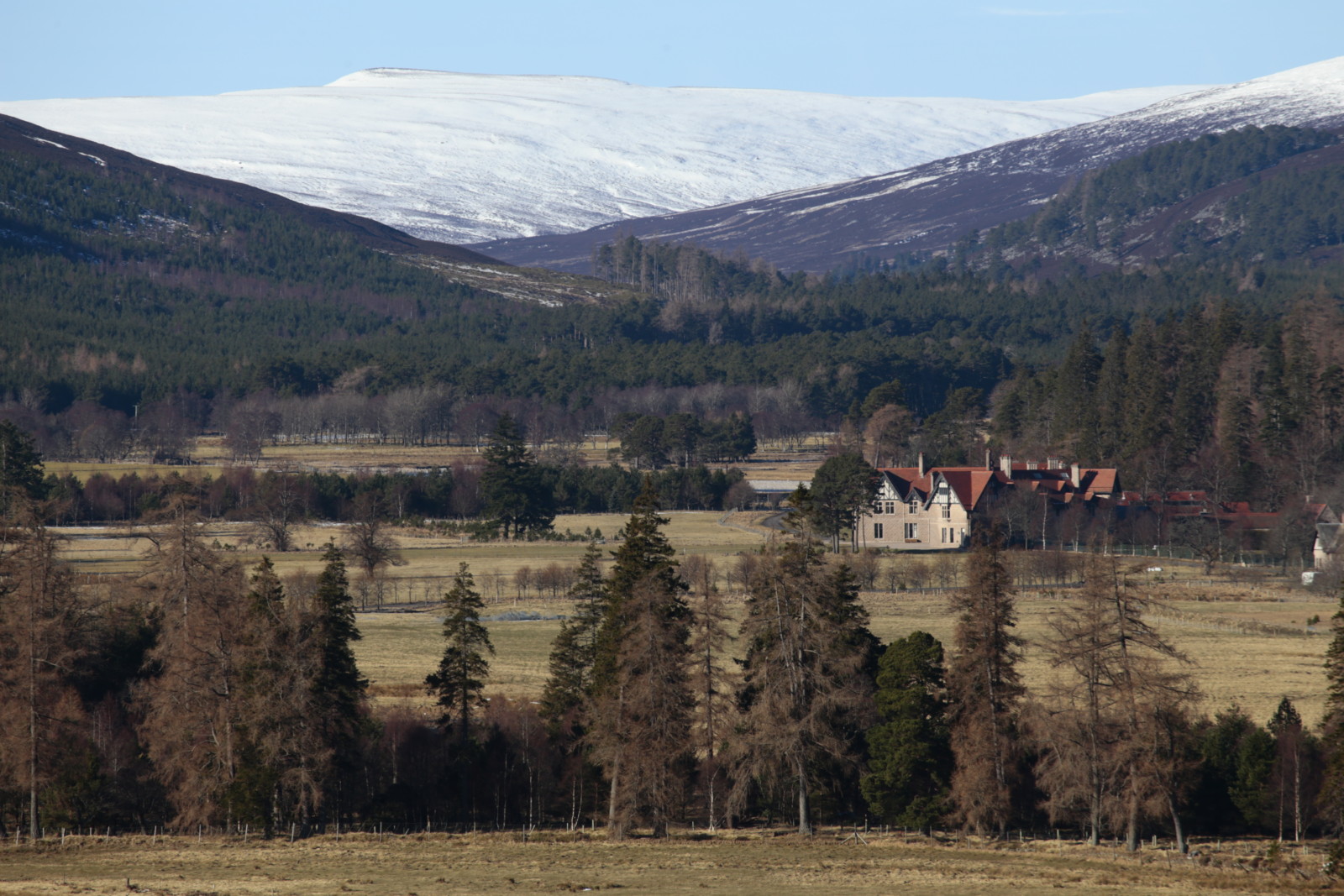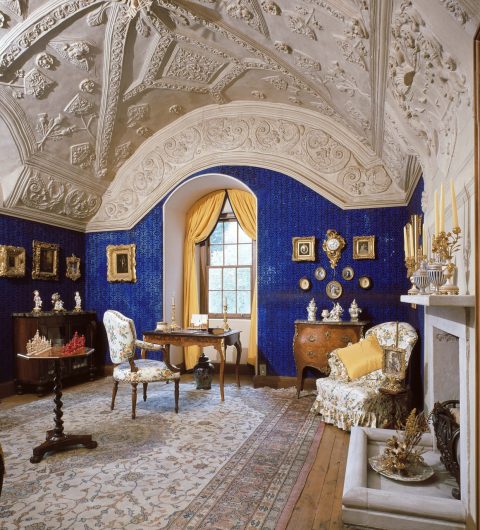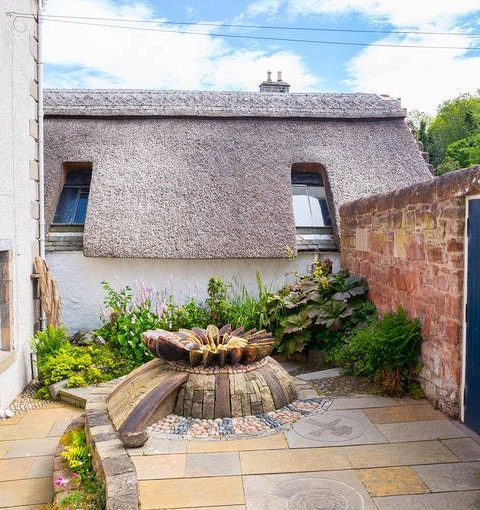A Road Trip through The Highlands
Beginning in the Cairngorms National Park, this route will take you on a tour of The Highlands with a total drive time of under four hours.
Follow in Queen Victoria’s footsteps and picnic at the Linn of Dee, take in the stunning vistas as you drive through the Cairngorms, and experience the powerfully moving Culloden Moor where the ’45 rising came to its tragic end.
Total drive time: 3 hours and 45 mins, not including the stops.
- A – Mar Lodge Estate
- B – The Tomatin Distillery
- C – Clava Cairns
- D – Culloden Moor
- E – Brodie Castle
- F – Hugh Miller’s Birthplace

Interior, Mar Lodge Estate
Your journey begins at Mar Lodge Estate, which is made up of more than 71,660 acres of heather-covered moors, Caledonian pine forest, towering mountains, and the Quoich wetlands, home to wading birds and otters. There are 15 Munros here, including 4 of the 5 highest mountains in the UK. The estate is also one of the most important areas for nature conservation in Britain. The beautiful ancient pine woods are home to red squirrels and pine martens. Birds such as the crossbill and black grouse are found here as well. Enjoy a picnic beside the Linn of Dee, the well-known area on the Estate that was much favored by Queen Victoria.
Insider tip: Why not enjoy a classic sporting weekend of shooting, fishing and stalking while staying in the holiday accommodations available on the Estate before embarking on the rest of the road trip? —> Book Accommodations

Mar Lodge Estate, Cairngorms National Park
Next on the itinerary is a trip to the Tomatin Distillery. While it is an hour and 40 minutes drive, the scenic views along the route through the Cairngorms National Park are absolutely worth it. Once at the distillery, head to the visitor’s center to take a tour and learn about the legacy of Tomatin. You can even fill your own bottle of their cask strength distillery exclusive whisky and take it home as an extra special memento of your Tomatin experience. (Don’t forget – if you are the driver of your party, unfortunately you won’t be able to have a drink – read about the Scottish legal alcohol limit when driving here.)
Afterwards, head to the Clava Cairns, a prehistoric site built to house the dead that is estimated to be about 4,000 years old. The cemetery remained a sacred place in the landscape for millennia, and provides many clues to the beliefs of Bronze Age society.What remains today would have once been part of a larger complex. Two parts of the complex, Balnuaran of Clava and Milton of Clava, are open to the public. The sites contain a range of prehistoric burial monuments and the remains of a medieval chapel.

The Memorial Cairn at Culloden Battlefield
It’s time to hit the road again, this time heading towards Culloden Moor. A visit to Culloden is an incredibly poignant experience. Headstones mark the graves of hundreds of clansmen who gave their lives for the Jacobite cause; a 6m-high memorial cairn honors the fallen; and an eerie silence often falls across wild Drummossie Moor – there is no escaping the emotions Culloden evokes. Head into the Culloden Visitor Centre, which stands beside the battlefield, to see artifacts from both sides of the battle and discover how a bloody fight that lasted only an hour changed life in the Highlands forever. It stands as a monument and a guide to a pivotal day in history.
Insider tip: Culloden is only 6 miles outside of the city of Inverness, where you can find a variety of restaurants, cafes, shops and over-night accommodation. You could even detour for a quick visit to Loch Ness and Urquhart Castle!

Interior, Brodie Castle
It’s a quick 30 minute drive towards our next stop, Brodie Castle. The castle has been restored to reveal what everyday life was like for the Brodie laird and his family. The rooms feature the finest antique furniture, works of art and irreplaceable ceramics collected by generations of Brodies. The impenetrable 16th-century guard chamber is flanked on one side by a cosy 17th-century wing and on the other by a sprawling Victorian extension.
Insider tip: you can actually read the letter sent by Robert the Bruce about the chief of Clan Brodie’s argument with monks who lived nearby!

Hugh Miller's Birthplace Cottage and Museum
Your final stop is Hugh Miller’s Birthplace. Hugh Miller is often referred to as one of the Great Scots of the 19th Century , and it is easy to see why. He was a fossil hunter, folklorist, Christian, stonemason, geologist, newspaper editor and a social justice campaigner, whose quests and writings have left a huge legacy of knowledge. The thatched cottage where Hugh was born in 1802 was built by Hugh’s pirate great grandfather, while the handsome Georgian villa, now an interactive museum, was built by his father. Outside, Miller’s Yard Garden of Wonders is a beautiful place to take a breath of fresh air.

